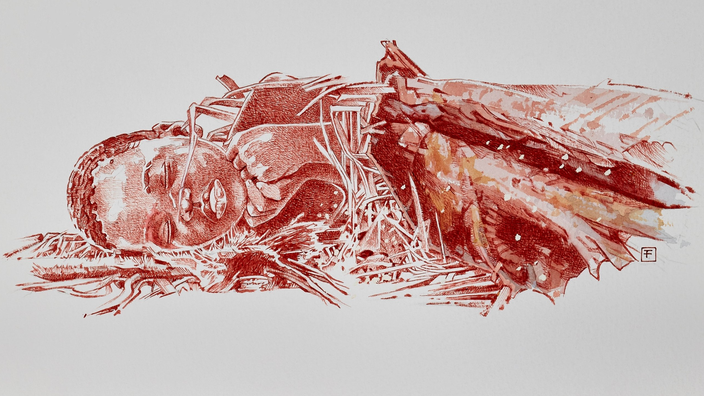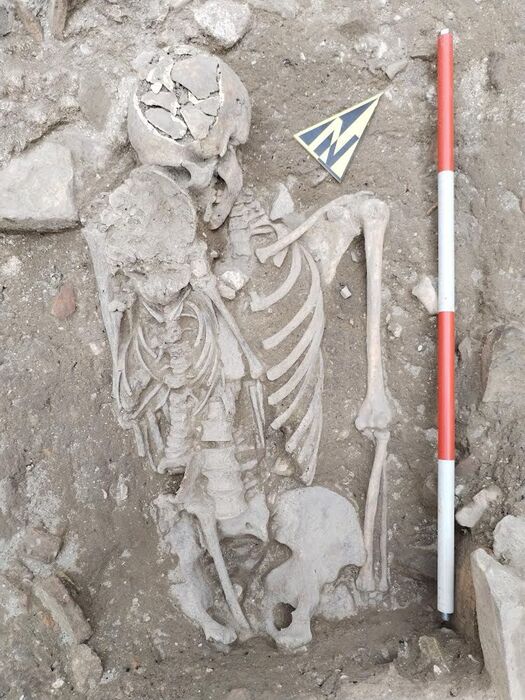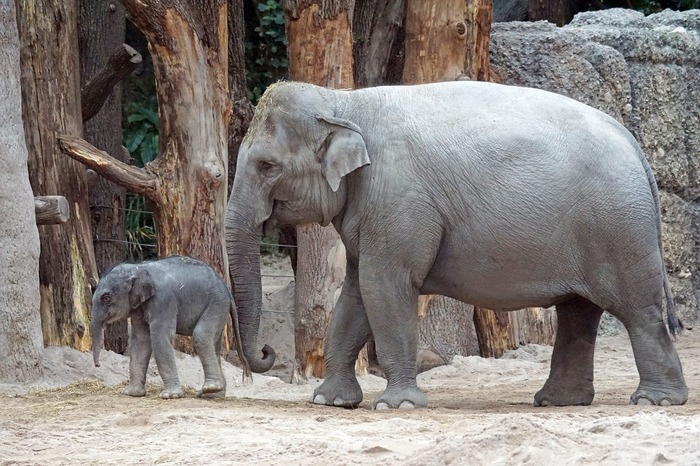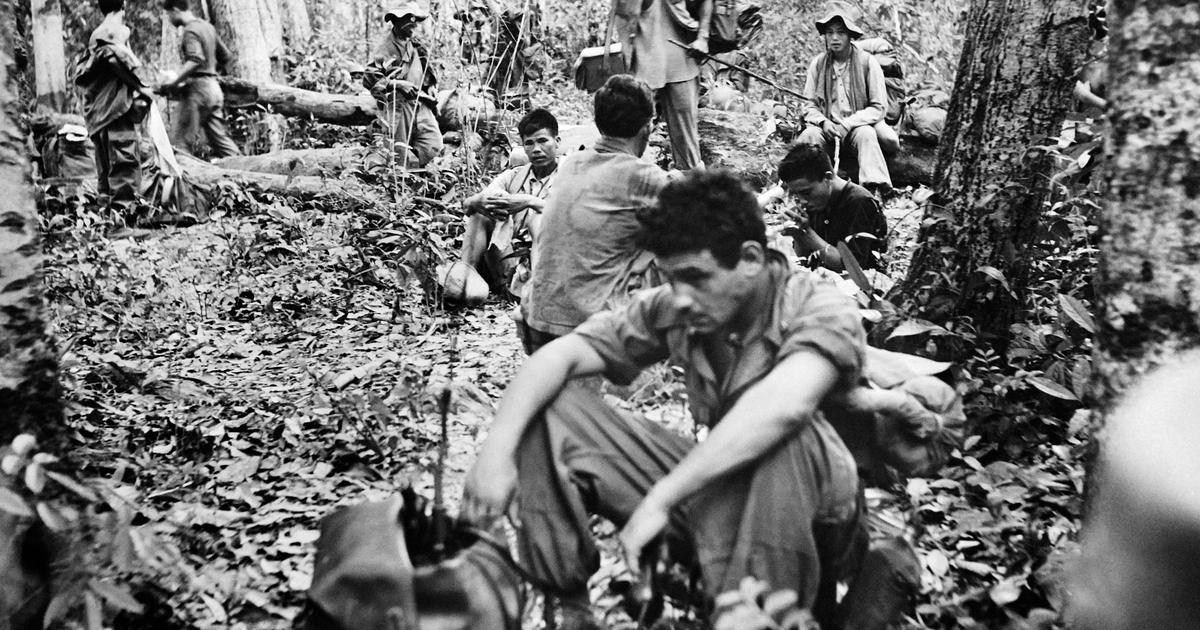The small set of bones had appeared, in all its fragility, in the midst of a layer of light-colored sediment, discovered some three meters from the surface, on the edge of a Kenyan cave.
Attributed to a child of about three years old, the remains had been placed in a grave and undoubtedly surrounded by a cloth or a shroud, as is still the custom today.
There is nothing contemporary about these skeletal fragments, however.
Dated nearly 78,000 years ago, this prehistoric individual baptized Mtoto ("
child
" in Swahili) was buried in the oldest burial ever unearthed on the African continent.
Read also: Discovery of the oldest human bone outside Africa
Identified in 2013 - after three years of research - by a team of international researchers in charge of the Panga ya Saidi site (Kenya), the remains of Mtoto were the subject of a long and patient excavation which did not reveal evidence that in 2017, the entire small pit dug around the deceased. Studied, since, in a Spanish laboratory of the National Center for Research on Human Evolution (CENIEH), in Burgos, the bones and the burial are finally presented, this week, in a major scientific publication published in the reference journal
Nature
. Signed by around thirty scientists, mostly divided between Germany, Spain and France, the article underlines theboth archaeological and anthropological importance of this discovery of the Middle African Paleolithic.
1/2 - Overall view of the site, at the entrance to the cave.
Mohammad Javad Shoaee
2/2 - The prehistoric burial was discovered about 3 meters from the surface.
Mohammad Javad Shoaee
First human burials
Buried shortly after his death in a pit dug for the occasion, Mtoto had been surrounded by funeral care, as evidenced by his placement in the fetal position, his supposed shroud, as well as the equally probable presence of a headrest. more or less elaborate disappeared since. So many details which, for the director of CENIEH María Martinón-Torres, can attest to
“a form of funeral rite”
. Of a poorly understood level of complexity, this one may have been accomplished by the Stone Age community to which Mtoto belonged. A real cognitive leap for humans who, until then, were content, for example, to deposit their deceased
"at the bottom of caves, in natural cracks",
or to just emaciate them, as recalled in a press release from the Bordeaux Archaeological Sciences Excellence Laboratory, whose researchers participated in the international study of the remains of Panga ya Saidi.
A few scattered traces of this indefinite community have also been identified on the same site, by the presence of cut stones and fragments of snails - consumed in quantity - on the same stratigraphic layer of Panga ya Saidi, which has remained inhabited. until the turn of our era.
1/2 - Digital visualization of the bones found at Panda ya Saidi.
Jorge González / Elena Santos
2/2 - Human remains found in Panga ya Saidi.
Maria Martinón-Torres
Dating back to a time when several human species still coexisted, the discovery of Panga ya Saidi also allows us to expand our knowledge of the cultural bridges that existed between
Sapiens
and his cousins, a research theme that has been in full development for several years.
Because if the Mtoto burial is the oldest known to date in Africa, discoveries made on the Eurasian continent have long revealed even more venerable burial sites, dating back to nearly 120,000 years among the Neanderthals, and up to 100,000 years at
Sapiens
.
To read also: The contacts between Neanderthals, Denisovans and Homo sapiens enamelled by cultural exchanges?
An
archaic
Sapiens
The discovery of this new ancient burial thus reinforces the fascinating record of cultural and symbolic practices shared between Homo sapiens and Neanderthals, and
"opens questions on the origin and evolution of the burial practices of these two closely related human species, as well. that on the degree of difference between our behaviors and our emotions ”,
notes in a
press
release the paleo-anthropologist Michael Petraglia of the Max Planck Institute.
As for the delay noted by the recorded African graves, it could quite simply be due to the lower number of excavations carried out on the immense continent.
Read also: Our ancestor
Homo sapiens
is not from a single African population
Finally, from the point of anthropology, the researchers identified, in the dental morphology of the small Mtoto,
"some archaic features connecting him to distant African ancestors"
, specifies a CNRS
press
release. While remaining an anatomically modern human, this morphological detail would strengthen the hypothesis of a
"multi-stage constitution of modern traits during the emergence of our species
", argue the researchers in their study.
"Regionally diverse"
origins
of
Homo sapiens
are indeed one of the avenues considered by specialists in the origins of our species, recalls the CNRS. Now published, the scholarly discussion will be able to engage around the results of this long Kenyan excavation. Very well documented, the work carried out in Panga ya Saidi then in the laboratory already stands out, in any case, with the two other oldest burial sites in Africa, of more uncertain reliability, respectively dated 74,000 and 68,000 years ago. This could not be better illustrated the necessary understanding of the excavated sites as a prerequisite for any new historical milestone. Or prehistoric, as is the case in Panga ya Saidi.








/cloudfront-eu-central-1.images.arcpublishing.com/prisa/XGPL4VVJANCUHGSVIZQFNBNCRI.JPG)
